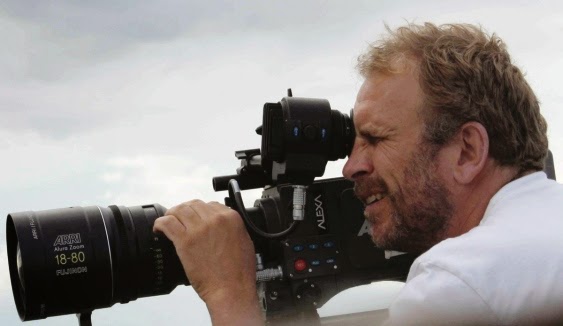I wrote about this film here a few weeks ago when it first aired on television. Those who caught it on TV loved it, but now we have a chance to see it on a big screen, so we are calling it the big screen premiere of the film.
PPPI is charging $10 a seat as part of a fundraiser to support grassland conservation on publicly owned grasslands in the province.
Take a look at the website for the documentary or check out the trailer here.
 |
| image courtesy of Victoria Times-Colonist |
Ian's Arri Alexa camera, now the standard for Hollywood features, seems to love the great expanses of grass speckled with distant bands of bison. There are some stunning scenes in this film and the sparing narration and interviews do justice to the complexities behind grassland conservation on the northern plains.
Two of the grassland conservation people featured in the film will be on hand at Wednesday's premiere--Wes Olson, the man who brought bison to Grasslands National Park, and myself.
As well, the filmmaker, Ian Toews, is flying in from Victoria to introduce the film and answer questions afterward. Ian's company, 291 Films, was formerly based in Saskatchewan but had to move after the film industry dried up thanks to Brad Wall cutting the film tax credit program.
Ian says Grasslands is the last film to be made under the old tax credit program.
To lead the evening off, we are also showing a twelve minute short called Soil Carbon Cowboys. Made by Peter Byck of Arizona, the filmmaker behind Carbon Nation, this documentary takes a brief look at one particular slice of cattle ranching that is gaining a lot of attention lately.
I talked with Peter on the phone last week and he offered to let us screen his film. He is working on a long-term project considering the ecological benefits of grassland management.
Soil Carbon Cowboys shows us three cattlemen who are applying some of Allan Savoury's holistic range management concepts. These men have seeded cultivated land to a mix of mostly non-native grasses and legumes. Then they cross-fenced with electric fencing so they could rotate their herd from one tiny half-acre or one acre paddock to another, resting any given patch long enough to recover. Using this "mob-grazing method" they say they can build up the health of the soil and increase soil carbon while maximizing weight gain on their animals.
This is a lovely little film and, with a great prairie sound track and some splendid slo-mo shots of bugs hopping and flying through the grass. It features Saskatchewan's most charming advocate of mob-grazing, the inimitable Neil Dennis, along with other producers from North Dakota and Mississippi who use similar systems.
 |
| screen capture from Soil Carbon Cowboys |
Though this kind of extreme rotation is not a cure-all, there is a net gain for biodiversity if you take land that was seeded entirely to wheat, canola, or crested wheat grass and plant a good mix of non-natives with legumes.
The insect life will be richer, some birds may survive the mobbing, and the soil may recover from the years of mono-cropping and pesticide use.
Soil Carbon Cowboys will make a perfect warm-up for the main event paying homage to the original carbon sequestration model of native grass and bison.
Please come on out and help us spread the word so we can fill the Museum Auditorium and celebrate our precious grasslands together.










